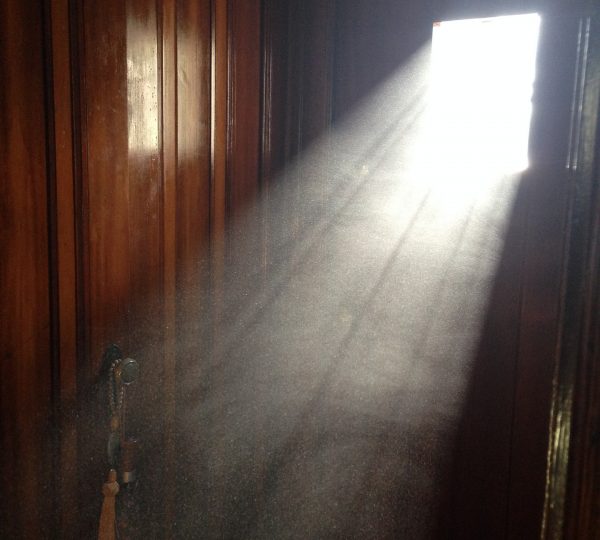Build Equinox has participated in groundbreaking research with University of Illinois Civil and Environmental Engineering researchers over the past two years, working to understand airborne disease transmission mechanisms for Covid, influenza and other respiratory microbes. The results of this work has led to a new “Fomite Aerosol” hypothesis, which will be presented at next week’s 40th AAAR (American Association of Aerosol Research) conference in Raleigh NC (“Influence of Human Activities and Occupancy on Emissions of Indoor Particles and Their Potential Role in Airborne Transmission of Pathogens”, P. S. Ganesh Subramanian, Joseph V. Puthussery, Yuqing Mao, Thanh H. Nguyen, Ty Newell, Vishal Verma).
Fomite aerosols are submicron, ambient airborne particulates that are inhaled deep into our lungs, infected, and exhaled back into room air. Unlike larger particulates, such as 2.5 and 10 micron aerosols that are trapped within our respiratory system when inhaled, a significant fraction of sub-micron particles are not trapped. These small particles are inhaled deeply within our respiratory system where they may become contaminated with infectious microbes before being exhaled back into the surrounding ambient.
The airborne disease transmission debate continues because explanations for significant airborne microbe transmission mechanisms are lacking. Only 25% of the general populace emit respiratory aerosols during normal breathing, which critics of airborne disease transmission argue is not sufficient for explaining Covid’s rapid indoor transmission. Our Fomite Aerosol hypothesis, however, provides an external mechanism for generating a large amount of particulates that are inhaled, infected, and exhaled.
Our research over the past two years consisted of field research in a restaurant and a music performance venue, and sealed chamber experiments. We were able to characterize submicron particulates from isolated humans (we are a fountain of submicron particulates!), and submicron particulate densities in a typical restaurant and a music venue. Our results showed that 100,000 submicron particles per liter are common. With 50% submicron deposition, 800,000 particulates per minute are inhaled, with 400,000, potentially infectious particulate exhaled per minute. This is in comparison to a high respiratory aerosol emitter with less than 100,000 respiratory particles released per minute.
More research is needed to determine the significance of the Fomite Aerosol hypothesis, and as we learn more, you'll be the first to know!
























